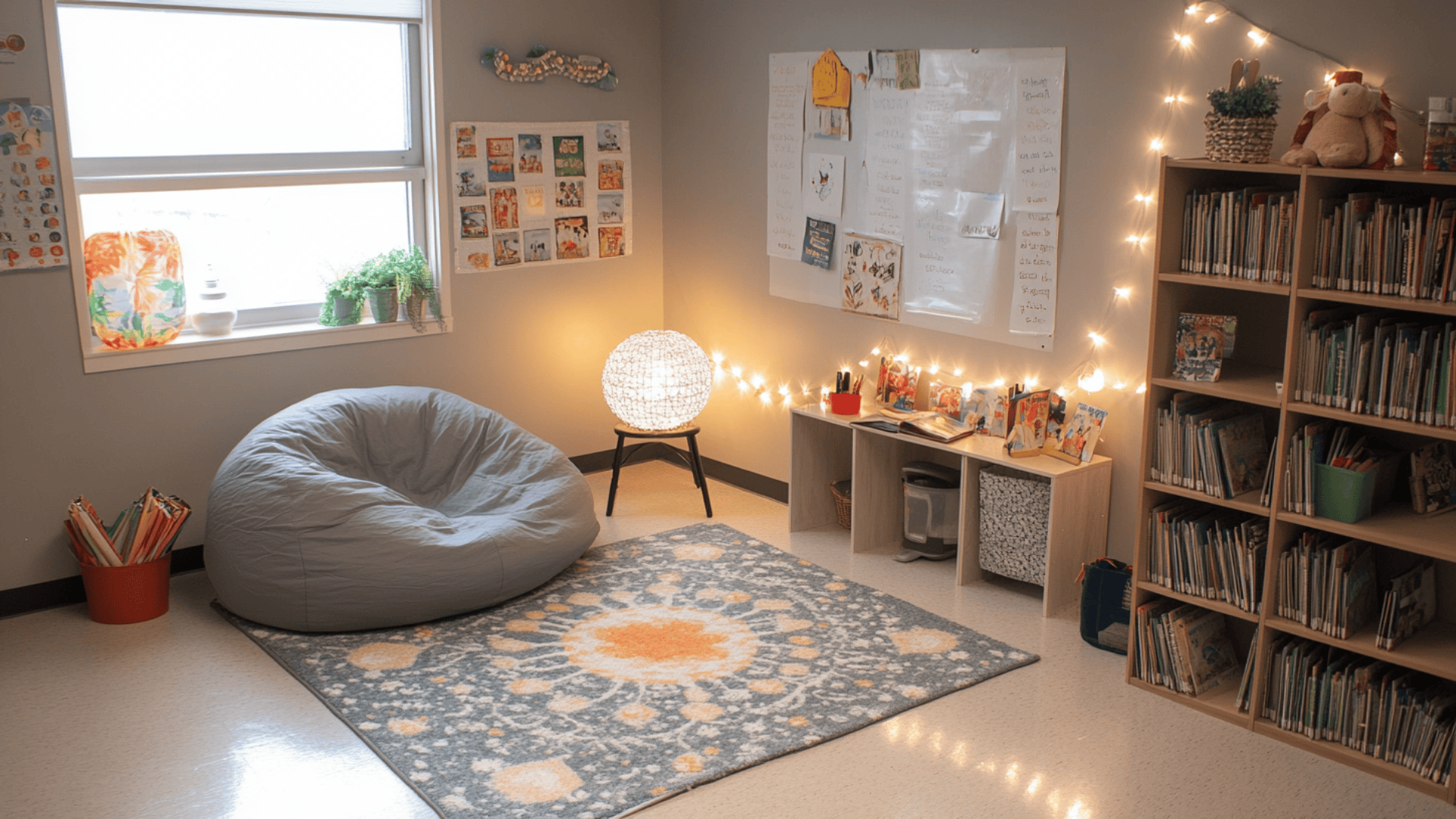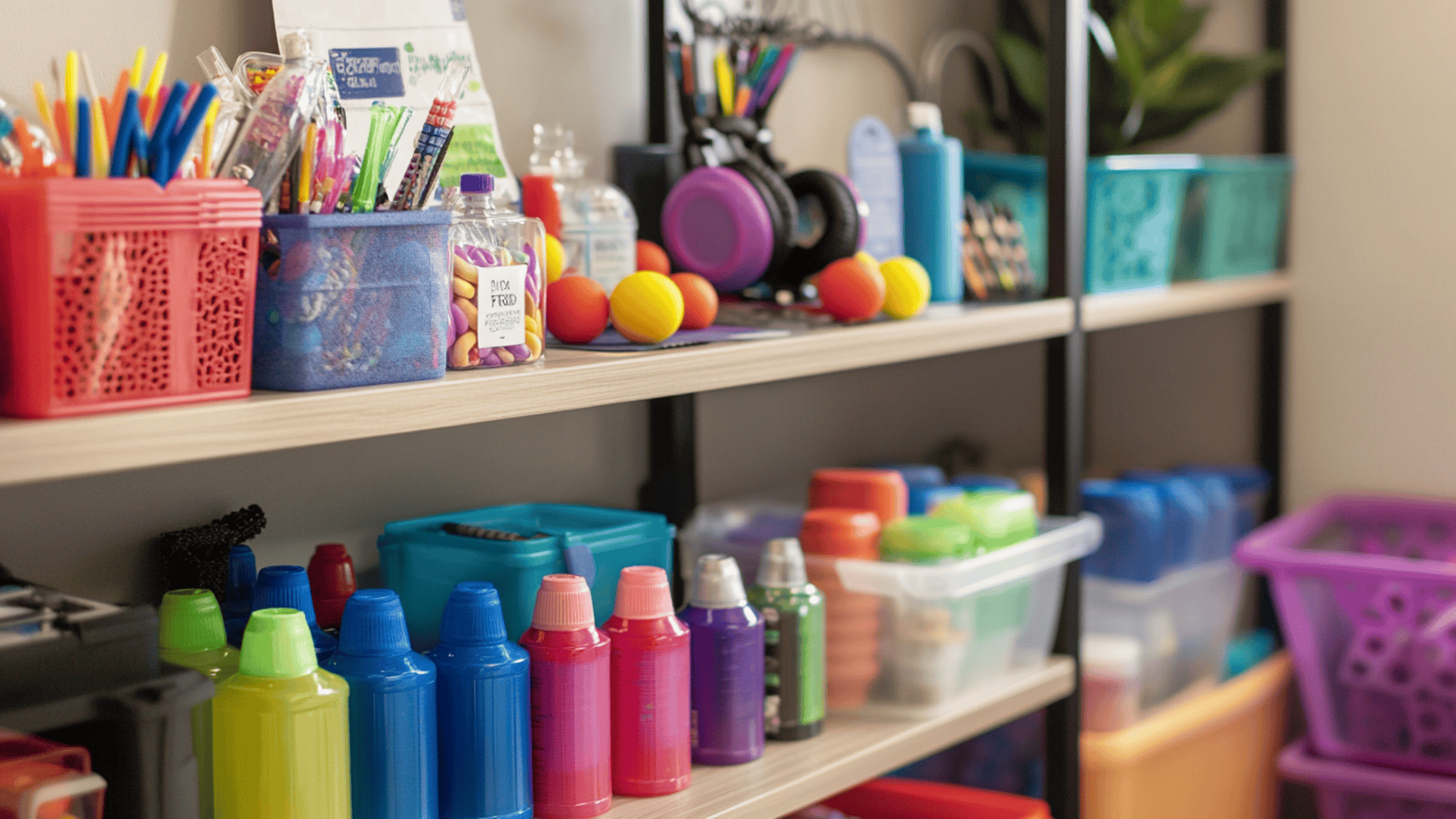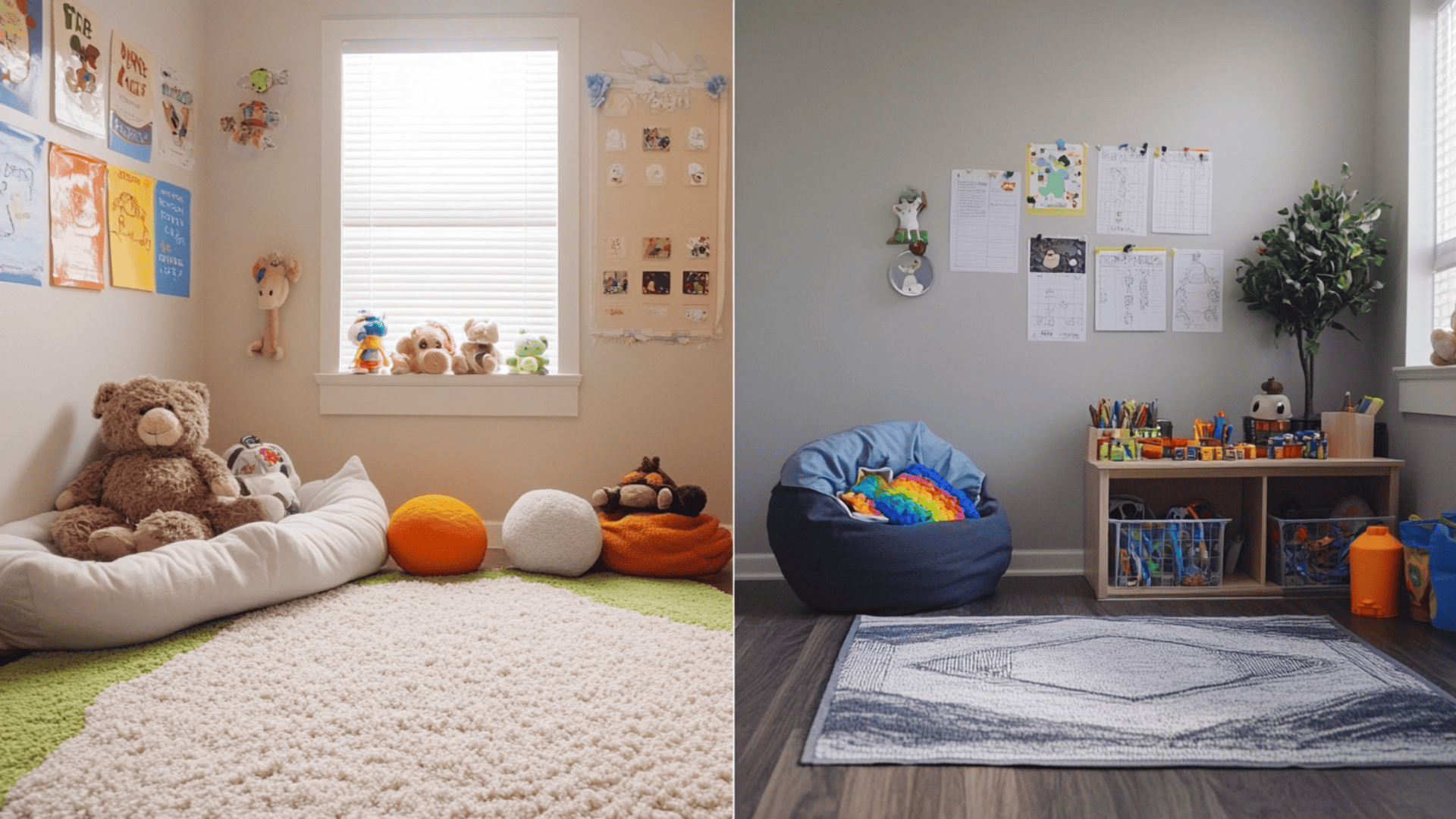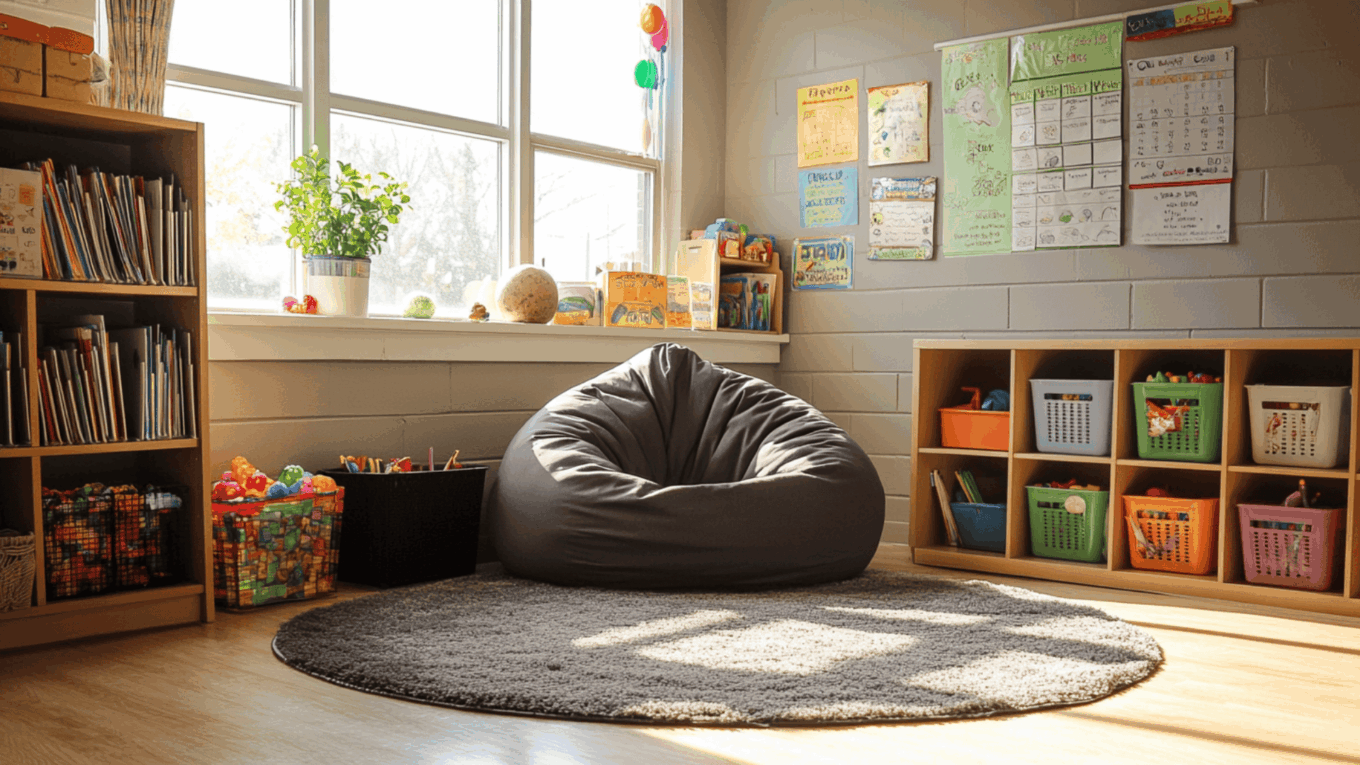Ever noticed a student who needs a moment to breathe but doesn’t have the space to do it? That’s where a calming corner comes in.
If you’re wondering what it is or how to make one that truly helps your class, you’re not alone.
This blog is your easy-to-follow guide to calming corner ideas for the classroom. You’ll learn what a calming corner is, why it matters, how to set it up, and what to include to make it effective.
By the end, you’ll know exactly how to create a peaceful space that helps your students manage their emotions and stay focused.
So, what makes a calming corner truly work? Let’s find out.
What is a Calming Corner and Why Does it Matter
A calming corner is a quiet space in your classroom where students can take a short break when they’re feeling overwhelmed. It helps them calm down, reset, and return to learning when they’re ready.
This space gives students a chance to manage their emotions in a healthy way. It teaches them that it’s okay to feel upset and, more importantly, how to handle those feelings.
Benefits for Behavior Management and SEL
- Supports emotional growth: Students learn to recognize their feelings and respond to them calmly.
- Reduces classroom disruptions: Kids who use the corner properly are less likely to act out or disturb others.
- Builds self-awareness and control: With regular use, students start to understand their triggers and how to cope.
- Creates a more positive environment: Everyone benefits from a space that promotes kindness, patience, and focus.
When used consistently, a calming corner becomes more than a quiet spot. It becomes a key part of your classroom culture.
Setting Up the Space

Before you start adding pillows and posters, think about where and how the calming corner will fit into your classroom. The right setup makes a big difference in how effective the space is for students.
Choosing the Right Location
Pick a spot that’s quiet and away from distractions. It should be easy to reach, but not in the middle of busy traffic areas like the door or the teacher’s desk.
Try a corner near a window, a bookshelf, or any unused wall space. Avoid areas where other students might walk by often. The goal is to make it feel safe, calm, and private.
Creating Visual Boundaries
Use simple items to create a sense of separation. You can add a small rug, a standing bookshelf, or even hang a curtain to define the space.
Wall decals or soft lighting can help signal that this is a special place for calming down. The idea is to give students a clear visual cue that they’ve entered a different space, one just for slowing down and taking a break.
Seating and Comfort Elements
Offer soft, cozy seating that feels inviting. Good options include bean bags, floor cushions, or a small padded chair. A plush rug can also help.
Add items like a small blanket, a few stuffed animals, or a soft mat. These help students feel grounded and safe while they reset. Even simple touches like dim lighting or a canopy can make the space feel more relaxing and personal.
Must-Have Items for Every Calming Corner

Once your space is set up, it’s time to fill it with the right tools. These items help students calm their minds and bodies in different ways. Choose a mix so every child can find what works best for them.
Sensory Tools and Fidget Options
These are great for students who need something to touch or move while they calm down.
- Stress balls
- Fidget spinners or cubes
- Sensory bottles
- Textured fabric or squishy toys
- Playdough
These tools help release energy in a quiet, controlled way and can make a big difference in a short time.
Emotional Awareness Aids (Feelings Chart, Posters)
Helping students name their emotions is a big step toward self-control.
- Feelings charts with faces and words
- Posters that show calming strategies
- Cards that explain simple breathing exercises
- Mirror for self-reflection
These visuals remind students that all feelings are okay and that they have healthy ways to deal with them.
Quiet Activities for Mindful Engagement
Some kids calm down best by doing something slow and quiet.
- Coloring books or sheets
- Drawing pads with crayons or pencils
- Simple puzzles or matching games
- Journals or “feelings notebooks”
These activities give students a calm task to focus on, helping their minds shift from stress to stillness.
Nature and Lighting Elements
Natural touches help set a peaceful mood in the space.
- Small potted plants or fake greenery
- Pictures or posters of forests, oceans, or animals
- Battery candles or soft string lights
- Salt lamps or touch lights
These simple elements make the space feel cozy and safe, like a break from the busy world around them.
Calming Audio: Music and Headphones
Some students respond best to soothing sounds.
- Headphones with soft music or nature sounds
- White noise machine
- Audio stories or meditations for kids
Make sure the audio is gentle and optional. Not every child will want it, but for some, it’s the key to calming down.
These items work together to make the calming corner a helpful, healing space that students can count on.
Teaching Students to Use the Calming Corner
Just having a calming corner isn’t enough; students need to know how and when to use it. Clear guidance and practice help them use the space the right way from the start.
How to Introduce it
Start by simply explaining the purpose: “It’s a space to help you feel better when you’re upset, angry, or just need a break.”
Give a tour of the space and show what’s inside. Let students know it’s okay to use the corner and that it’s not a punishment.
Make the tone positive and supportive. This helps build trust and encourages students to see the corner as a safe tool.
Role-playing Usage
Practice makes it stick. Walk through common scenarios so students know what to do.
- Act out what it looks like to feel overwhelmed and go to the corner
- Show how to use different tools inside the space
- Practice calming breaths, using timers, and returning to class
This step helps students feel confident and removes fear or confusion about using the space.
Setting Clear Rules and Expectations
Set simple, clear rules so the corner works well for everyone.
- One student at a time
- Use calm hands and quiet voices
- Spend 5–10 minutes before returning
- Only use items in the calming corner
You can even post these rules in the space as a visual reminder. When expectations are clear, students are more likely to use the corner in a way that helps them and doesn’t distract others.
Adapting the Corner for Different Ages and Needs

Every student is different, and what works for one may not work for another. You can easily adjust your calming corner to suit different age groups and specific emotional or sensory needs.
Preschool and Elementary Ideas
Young children need visuals, textures, and simple activities.
- Use picture-based feelings charts
- Include plush toys and soft blankets
- Offer easy tools like sensory bottles or bean bags
- Keep instructions short and use symbols or pictures
- Add storybooks about feelings and kindness
Younger kids often respond well to calm-down routines with clear steps they can follow on their own.
Strategies for Middle and High School
Older students need more privacy and age-appropriate tools.
- Use calming posters with motivational quotes
- Offer journals, sketchbooks, or quiet music options
- Let them choose if they want to use the space, avoid forcing it
- Avoid toys or tools that may feel too “young” or embarrassing
The space should feel respectful, not childish. This helps teens take emotional breaks without feeling singled out.
Supporting Students with ADHD, Autism, and Anxiety
For students with unique needs, small changes can make a big impact.
- Use visual timers to help with time management
- Include weighted items or textured objects for sensory input
- Provide noise-canceling headphones or calming audio options
- Limit visual clutter; too many items can be overwhelming
- Add a feelings scale that they can point to instead of speaking
Check in often and ask what helps them most. Personalizing the space gives these students more control and comfort.
Adjusting your calming corner this way helps make it inclusive, supportive, and effective for every learner.
Maintenance and Rotations
You’ll need to maintain your calming corner regularly to keep it helpful over time. A tidy, updated space stays inviting and effective for students who need it most.
A well-kept area also shows students that it’s a valued part of the classroom, not just an afterthought.
Keeping it Organized
Clutter can ruin the calming vibe. That’s why it’s important to keep things neat and simple.
Use labeled bins or baskets for each type of item so students know exactly where to find what they need.
Try to keep only a few tools out at once and store the rest. Rotating them every week or two keeps things interesting without making the space too busy. A quick daily check—just a minute or two—can help catch any mess early.
If it fits your routine, you can even assign a student helper to tidy up the space each day. When everything has a place, students can settle in quickly without added stress.
Monthly Refresh Ideas
Updating the calming corner now and then helps maintain its impact. Even small changes can make it feel new.
Try swapping out books, posters, or activity sheets. Change up the music playlist or introduce a new sensory toy.
Adding seasonal decorations, like fall leaves in October or snowflakes in December, makes the space feel special and connected to the world around it.
You can also introduce a new emotional tool or reflection card to support deeper self-awareness.
These small updates give students fresh ways to engage with the space and can reignite its usefulness for regular users.
Managing Overuse or Misuse
While the calming corner is a great resource, it’s important to guide students on how to use it properly. It should be a space for real emotional needs, not a way to skip classwork or avoid challenges.
Set clear time limits with a visual timer so students know when it’s time to return. Teach them when it’s appropriate to use the space, like during independent work time, not during group lessons or transitions.
If you notice a student using the corner too often, track their visits and check in with them privately.
Remind the class that the corner is a helpful tool, not a hangout. When students understand its purpose, they’re more likely to use it respectfully and effectively.
DIY and Budget-Friendly Options
You don’t need a big budget to create a calming corner that works. With just a little creativity, you can pull together a space that’s just as effective as the pricey versions you see online. Most tools can be found at a dollar store, printed at home, or made with simple supplies.
Here are some easy and affordable ideas to get you started:
- Toys: Stress balls, squishy toys, fidget spinners
- Storage: Bins, baskets, clipboards, small shelves
- Lighting: Battery-operated candles, string lights, touch lamps
- Activities: Coloring books, crayons, and simple puzzles
- Printables: Feelings charts, breathing cards, calm-down posters
- Bottles: DIY sensory jars with glitter, glue, and water
- Fabric: Fidget squares, weighted lap pads, soft mats
- Filler: Bean bags or rice bags for squeezing
- Crafts: Breathing sticks made from straws and beads
- Decor: Seasonal themes, nature photos, cozy signs
These budget-friendly options help you build a calming corner that’s functional, cozy, and personal, without breaking the bank. A little effort goes a long way in making a space your students will truly value.
Conclusion
A well-planned calming corner can make a big difference in how your students manage stress and emotions.
Now that you’ve seen what to include and how to set one up, you’re ready to create a space that truly supports your classroom.
Use the ideas you’ve learned to build a corner that fits your students’ needs, no matter their age or background. Even small changes can lead to big improvements in focus, behavior, and emotional growth.
Remember, the best calming corners are simple, welcoming, and used with care.
Want more helpful tips beyond calming corner ideas for classroom success? Read our other blogs for easy guides and practical advice that support your teaching.




